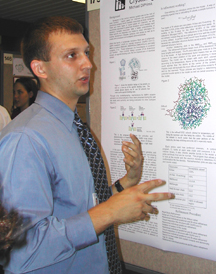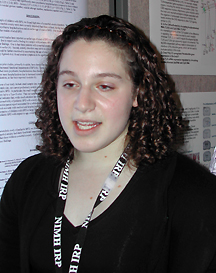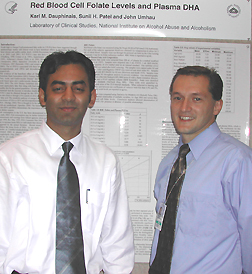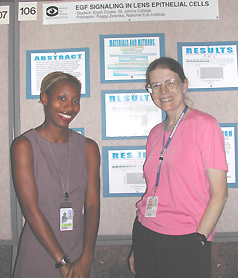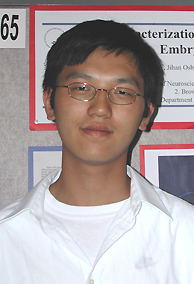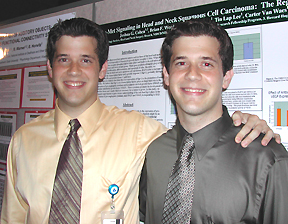 |
|
Double
Take: Seth (left) and Joshua Cohen attend ther same medical
school but worked in different NIH labs this summer
|
Angiogenesis Inhibition
Many kinds of tumors secrete molecules that promote the formation of new blood vessels, allowing them to continue their rapid growth. NIDCD investigators Zhong Chen and Carter Van Waes had previously observed high levels of hepatocyte growth factor in patients with head and neck squamous cell carcinomas. Brian Worden, an HHMI scholar working in that lab the past year, identified Egr-1 as a potentially important transcription factor in the expression of platelet-derived growth factor and vascular endothelial growth factor.
Continuing Worden’s work, Joshua Cohen succeeded in elucidating the Egr-1 signaling pathway that turns on these two angiogenic growth factors. He also showed that antisense oligos to Egr-1 inhibited expression of Egr-1 in a squamous cell carcinoma cell line.
This type of head and neck tumor is often detected too late for the usual therapeutic regimen to be effective; it’s hoped that blocking Egr-1 will eventually prove clinically useful, Cohen notes.
Cohen, a second-year medical student at Northwestern University Medical School in Chicago, said that working at NIH has been an "amazing" experience. "You study and read about stuff in medical school. Here you get to work with the people doing that research." He thanked by name his preceptors Van Waes and Chen—and everyone else in the lab—for teaching him how to carry out experiments. His fate, he says, is now sealed: "I have to stay in research."—P.K.
Stem Cell Platforms
Perhaps it is fitting that Seth Cohen, who declares himself the better-looking one of two identical twins working at NIH this summer, also got the sexy research topic—stem cells. Cohen, working with NIAMS mentors Wan-Ju Li and Rocky Tuan, cultured mesenchymal stem cells from adult human bone marrow.
His goal was to compare growth of the cells on the usual flat surfaces to growth on biodegradable, potentially implantable 3-D nanofibers made of poly(e)caprolactone (PCL). The results—equal or slightly superior proliferation on the PCL film—bode well for the possibility of someday implanting the nanofiber disks, loaded with stem cells, as frameworks for regrowing cartilage. The cells on nanofibers also showed greater predilection for calcium mineralization, beginning this differentiation into osteocytes on day 1 vs. day 4 for the monolayer.
Like his twin, Cohen is a second-year medical student at Northwestern University in Chicago. He came to NIH—"The Big House"—for its world-class research and researchers and would like to combine research with medical practice in his career.—C.H.
